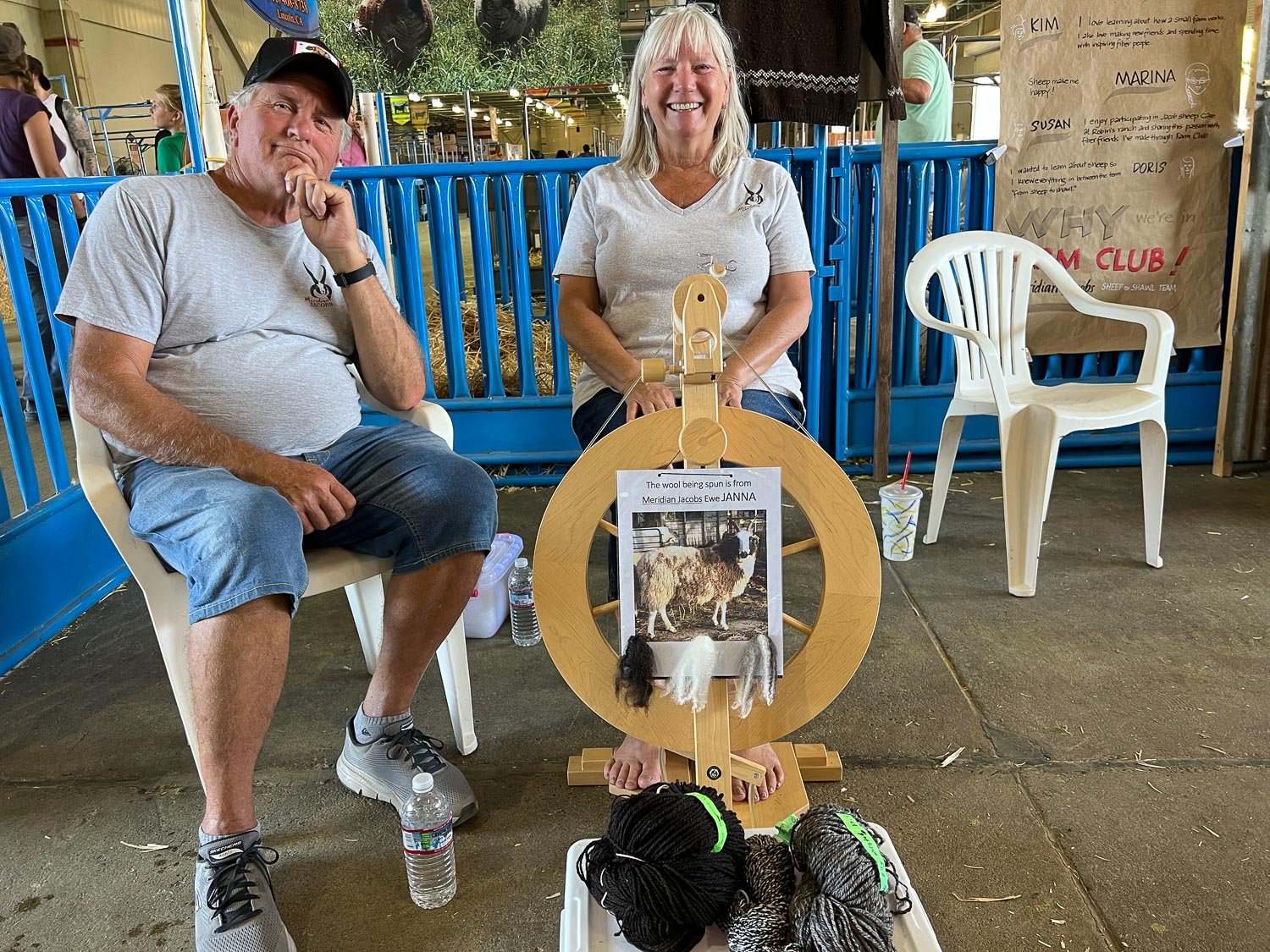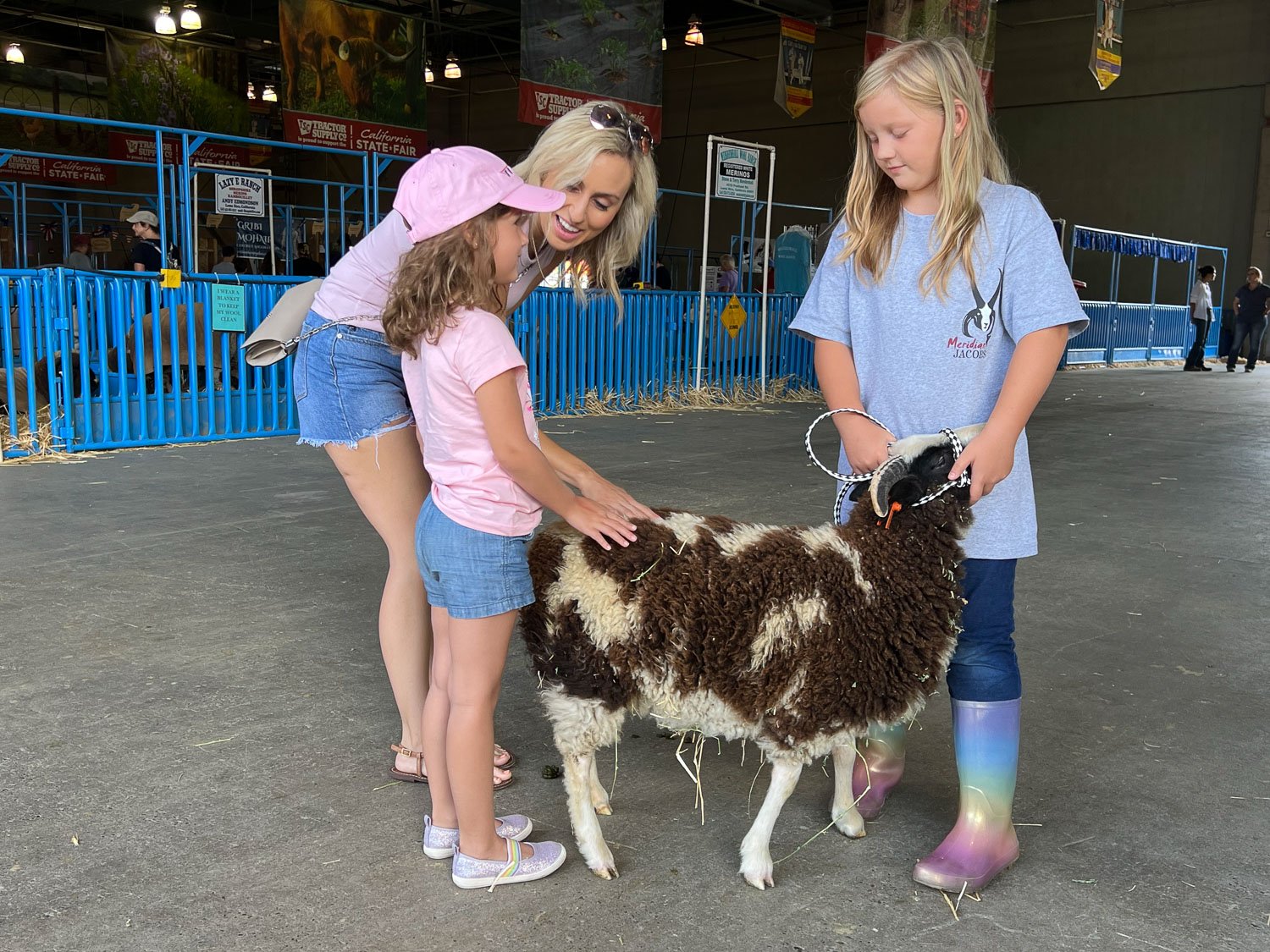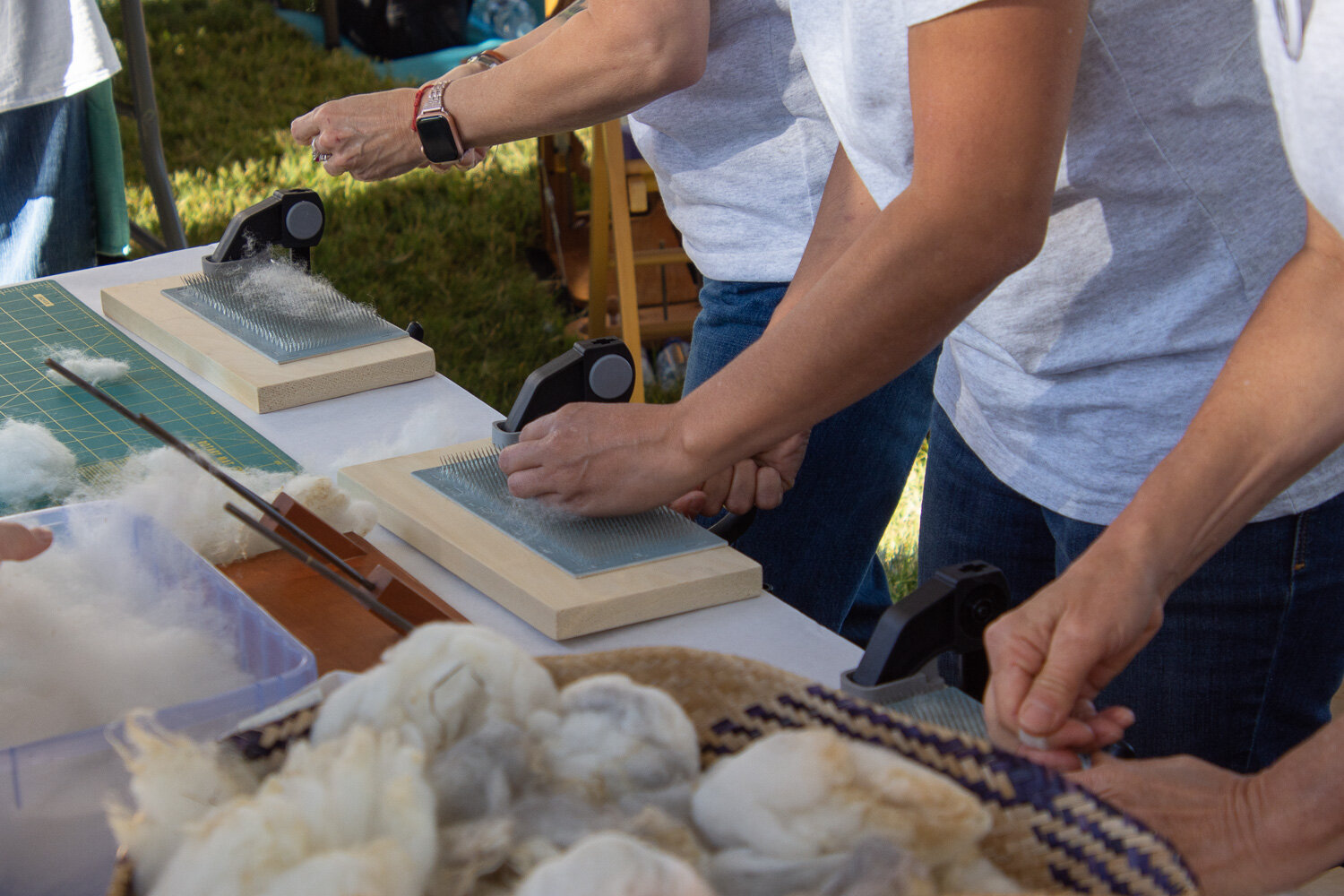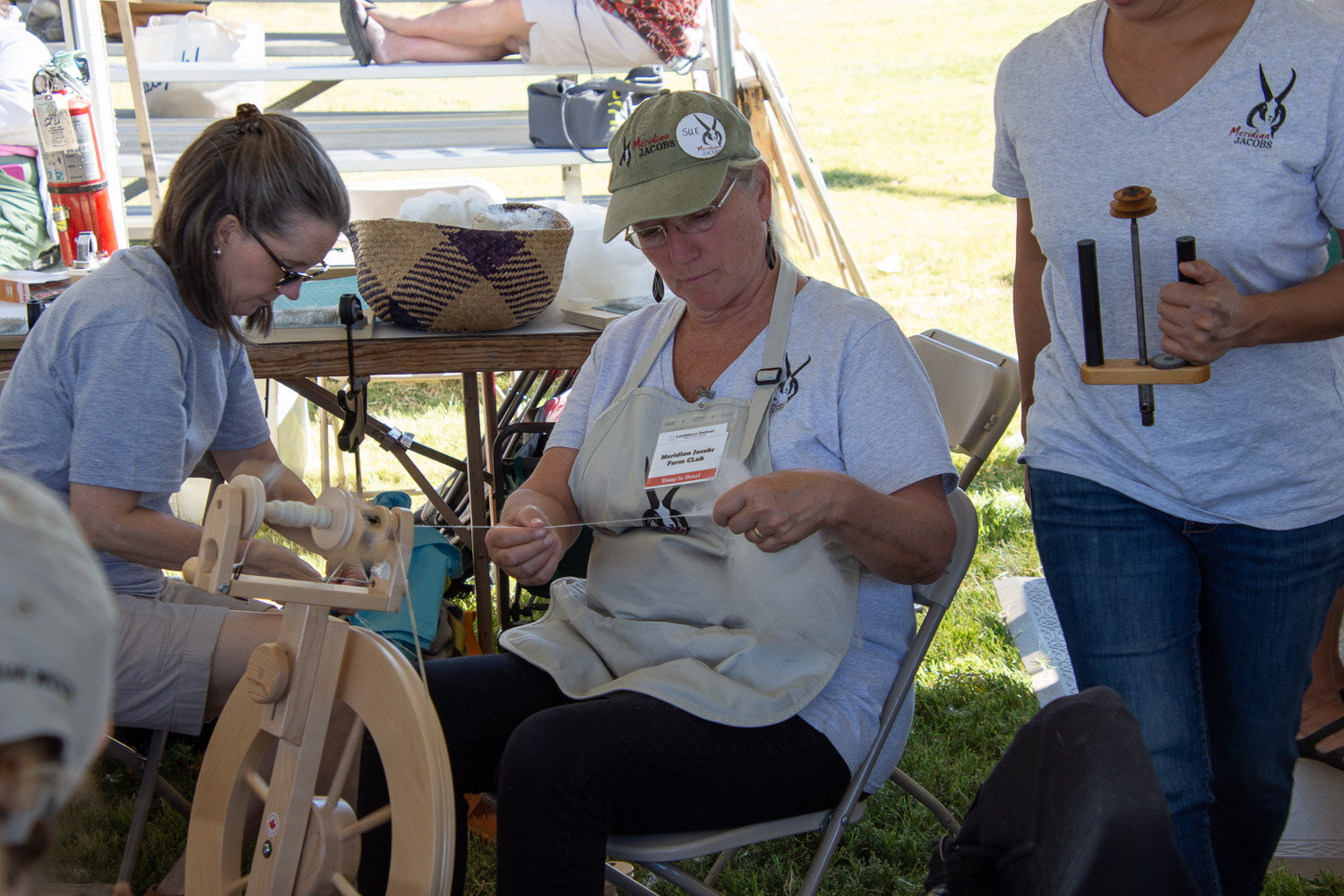Farm Club in San Francisco
/A brief introduction to the Farm Club Retreat in San Francisco.
Read MoreJuly, 2023: I have switched to writing most of my blog posts on my original WordPress blog so access all the current news there and sign up on that site for email updates.
A brief introduction to the Farm Club Retreat in San Francisco.
Read MoreI have plenty of other blog posts in my head that I want to share but I haven’t had time. I’ll skip ahead to the State Fair that just finished. I’ve given up keeping this blog “journal” in order.
The last time we were at State Fair was in 2019 and after that the world changed. The pandemic shut everything down, but my “altered universe” began after a serious accident in October 2019. I don’t know why I’m including that here, except that I think it contributes, along with the significant demands on my time, to how this seemed so complicated this year. My thanks go out to my Farm Club members who pitched in and to my husband who did a lot of the “heavy lifting”.

I didn’t get a “before” photo. Imagine the blue pens extending all the way to the white chair on the left. That is was a double row of 8 pens back to back. The first step in setting up the display was to remove four pens and figure out how to deal with the tall double panels that make up the fronts and have the power cord attached.

These are the four pens remaining on this side for sheep. We also have sheep in the pens on the back side.

The fair has a Marketing Program competition with the goal of encouraging livestock participants to provide educational information for fairgoers. My display has always been competitive, sometimes trading 1st and 2nd place with some of the other producers. I wanted to rate on top again this year. This is the display area near our pens.

Farm Club members help set it up and demonstrate for the public. Some members came for two or three days and some came for one, but they all contribute in very important ways.

New for this year was that my granddaughter, Kirby, was at the fair all four days. She and her mom and brother were here for two weeks prior to the fair, and Kirby stayed behind when they returned to Texas.

Kirby spent a lot of time at the Touching Table talking to visitors.

We had raw wool to touch (Q: “Why is it called greasy"?), horns and horn buttons to examine, and temporary tattoos to give out.

After talking to people at the table Kirby was glad to show them the sheep and answer questions.

This is Kirby with her lamb, Rose.

Friday was Kirby’s 8th birthday. She had a party on the weekend with her cousins and other grandparents, but we needed to mark the actual day before we left.

The main gift from us was a stable (thanks to a FC member) for her horses. She also got a coupon to pick out a new Breyer horse at the feed store on one of the days after the fair.

We spent Friday with more public interaction. This post has includec mostly photos of Kirby, but notice all the Farm Club members in the background. They played a front and center role even though Kirby is the focus of most of these photos.



These were long hot days, but Kirby hung in there very well. I’m impressed.
Like everything else in our lives this year Lambtown, our local fiber fair, has become virtual. The festival will be held (virtually) on it’s regular dates—the first weekend of October. The sheep-to-shawl contest was changed to try it in a virtual format. Normally in a Sheep-to-Shawl contest teams of 6 or 7 people gather on one day and in 4 or 5 hours, depending on the contest rules, prepare and spin the wool and weave a shawl that is judged at the end of the contest. The loom is warped ahead of time and teams have procurred and washed their fiber, but no other work has been done until the contest starts.
How does a virtual contest work? My friends who manage Lambtown and created the first ever (as far as we know) virtual sheep-to-shawl contest decided that if in a regular contest there are 7 people on a team and they have four hours to complete the work then the same time should be allowed vitually. Seven people worked for 4 hours means 28 people hours were used. They decided that teams could be from 2 to 7 members and they could choose to compete all together on one day or separately over several days—after all the whole reason for this is because of Coronovirus requirements for social distancing. Zoom meetings were set up for the weekends in August and September and all work needed to be on Zoom—teams could choose which days to work and how many people would gather. Everyone who put in time had to record their time in half hour increments and each team had a maximum of 28 hours to complete the shawl.
Last year the Meridian Jacobs Farm Club put together a team and competed at Black Sheep Gathering in Oregon in July and at Lambtown in October. I couldn’t be on the team because at BSG I was showing sheep and at Lambtown I was a vendor. This year I am a vendor at Lambtown but, being virtual, there was no conflict with dates.
There were six of us on the team and we hadn’t planned on this ahead of time. So the first task was to figure out what fiber to use. Jacob wool, of course, but I didn’t have any left from the last shearing. Some of the Farm Club members had fiber left from previous years (imagine that, FC members with stashes of fibre!) so our weft fiber would be a combination of contributions from Jacob sheep. We decided to use white because I wanted to weave a pattern that I’ve been doing lately and it would best show up with a white weft on a dyed warp. I warped the loom with some of the Timm Ranch yarn that I dyed using coreopsis. I wove a couple of sample shawls to get an idea of the time to allow for the weaving (about 3 hours).

This was our first day back on August 8. One of our members couldn’t come on this day so there were five of us prepping fiber. We worked under the trees near the shop and spaced out over two picnic tables to maintain our social distancing.

The first step was to open up the wool locks by “lock-popping”.

That is a term that Clemes and Clemes used when they developed this handy tool. Then we carded the popped locks.

This is an electric drum carder but the rules of the sheep-to-shawl contest prohibit using electric carders so we attached the handle to this one and hand cranked.

The rules also included showing all work on Zoom. We set up the iPad to view all the team members. Some of the team started spinning but I didn’t get more photos. The missing team member stopped by to pick up the bobbins from the day’s work. She did her own Zoom session a week or two later while she plied the yarn—that would give us some yarn so I could get started with weaving right away at our next session.
We worked until about 1 that day and then Dan and I had to meet a livestock hauler in Sacramento to deliver sheep that would be going to buyers in the midwest.

This is the trailer that the sheep were to go in. This is the same brand as our new trailer (on the left in this photo) but this one is huge. The livestock are in the silver part and the tack room/living quarters take up the whole front of this one. It’s quite the rig!

Here is the trailer interior showing some of the travel companions. They included goats and little pigs.
Back to the Sheep-to-Shawl contest.

All our team members were able to gather yesterday (September 6) and our plan was to do all the work necessary to complete the shawl. We had 13 hours left of the 28 total hours we could use for his. So the plan was that i would start weaving while the others spun and plied with a little more fiber prep thrown in. The spinners would go “off the clock” when it was determined that there was enough yarn to finish the shawl.
We set up two devices. My ipad showed the spinners sitting to the south and a phone was aimed at my loom and one person who was still prepping fiber at the picnic table.

It is shady under the trees, but we set up canopies to be more fully protected from the sun. It was predicted to get to 110 by later in the day and it was hot even in the morning. In addition it was another smoky day. The air quality had improved over the last couple of days but this day it was dramatically worse again—we could smell smoke and there was ash on the tables we had just cleaned.

This was my view all morning. I was under a time deadline so I didn’t take very many photos. We started at 10 and I wove until 11:30 when I ran out of weft yarn and had to let the spinners catch up. Then I started weaving again at noon. I finished weaving about 12:30 and then we cut off the shawl and two of us worked on twisting the fringe. We finished with minutes to spare.

Now I need to pack this up and mail it off. It will be judged on the Lambtown weekend in a virtual venue.

Thanks to this great group of friends for coming together for this event and for your support of me and the farm throughout what has been a trying year.
I wrote about my experience at this year’s Lambtown in Dixon, California here.

On Sunday morning while I was getting my vendor booth ready for the day the Sheep to Shawl (S2S) teams were gathering. There were to be seven under this tent and one of them was the Farm Club team! Before Lambtown opened for business I looked for the other Farm Club members who were supporting Lambtown one way or another. We had pretty good representation!

Gynna and Roy (along with Hank this year) were the brains behind Lambtown the last few years and responsible for it’s revival and success.

Jackie helped in the Fibershed Coop booth but was also staffing the booth for Solano County CART (Community Animal Response Team). Stephany spent most of her time helping to organize and then staff the Fibershed booth.

Shoppers are an important part of the event. Dona and Mary exemplify the best kind of shopper.

Lisa volunteered at Lambtown and did her share of shopping as well, finding the naturally colored cotton that I was selling.

As I got back to the Sheep-to-Shawl tent I found five more Farm Club members. Alison and Marina were already committed to the Silverado Spinster’s team, but it was Alison that got the Farm Club team organized back in July.

Here Kathleen has joined them, also on the Silverado team.

The all-important tea for Alison.

I didn’t get a photo of Carol but she is represented on this team.

Farm Club member, Deborah, was also on a different team—Spindles and Flyers.

This is the Meridian Jacobs’ Farm Club team (and me) just before the competition started. There are 4 spinners, 1 plyer, 1 “go-fer”, 1 educator, and the weaver. They can all work on fiber prep but they all have to stick to their other jobs. The loom was warped with handspun Jacob wool of course.

Here are the posters that the team prepared as part of the education component of the contest.

When the call to start was made, the team all began fiber prep.

Opening locks before putting them through the drum carder.

Note the bandaid box. Safety first!

Seen on a spinning wheel.

Spinning is underway.

Brenda seemed to be having a good time.

The weaver, Reba, had to focus since she had a rather long treadling sequence to get the pattern she planned.

I love that our team thought up the “secret message” that unrolls as the warp is woven.

Alison, on the neighboring team, used headphones to help her concentration while weaving.

This is the beautiful pattern that Reba wove. The shawl was not finished in the allotted time, and the team agreed that it was better to leave it on the loom and finish it later rather than cut if off just to make a time limit.
I can’t wait to see this when it is really finished! Go Team!
Farm Club helped today with vaccinating, barn cleaning, hoof trimming, and more
Read MoreFarm Club members met at the farm to help with vaccinating and other chores.
Read MoreFarm Club met to preview fleeces for next week’s shearing and to work in the barn cleaning and organizing. A fun time was had by all.
Read MoreAt Meridian Jacobs farm we raise Jacob sheep and sell locally grown wool fiber, yarn, and handwoven goods. We teach fiber classes and sell Ashford, Clemes & Clemes, and Schacht spinning and weaving equipment. We encourage farm visits with field trips and our unique Farm Club.
Search blog posts since 2019. If the search says it can’t find a post try putting in your search word a second time. I don’t know why but the second time it seems to work.
Search the entire website, including older blog posts.